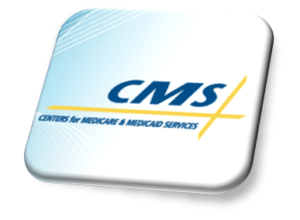 In 2017, more than half the country’s hospitals will feel the sting of government-imposed readmission penalties. The total cost? Upwards of half a billion dollars, in the form of withheld Medicare payments. Is it any wonder that healthcare systems are urgently exploring ways to reduce patient readmissions for the same medical episodes?
In 2017, more than half the country’s hospitals will feel the sting of government-imposed readmission penalties. The total cost? Upwards of half a billion dollars, in the form of withheld Medicare payments. Is it any wonder that healthcare systems are urgently exploring ways to reduce patient readmissions for the same medical episodes?
One tool that can help make the post-discharge period successful (in that it doesn’t result in another trip to the hospital) is patient-generated health data (PGHD).
Hospitals increasingly motivated to slow the revolving door of readmissions
The Hospital Readmissions Reduction Program (HRRP), a provision of the Affordable Care Act (ACA), began in late 2012; it stipulates that the Centers for Medicare and Medicaid Services (CMS) shrink payments to hospitals that experience a high number of readmissions from patients with certain conditions during a 30-day window following their discharge.
The number of hospitals hit with penalties is close to the same as last year, but the total amount they will be penalized is the highest so far.
Although the imposition of penalty follows a predictable formula, penalized hospitals argue that they’re not all alike…and neither are their patients.
For instance, some hospitals care for large numbers of low-income or otherwise vulnerable individuals who might not have the resources or assistance required to undertake post-discharge medical routines.
Furthermore, many readmission patients struggle with chronic illnesses, and regardless of their level of self-care following a hospital stay, they will not be free of the underlying condition. The U.S. Centers for Disease Control and Prevention (CDC) estimates that chronic diseases are to blame for 70% of annual deaths in the nation, and the pricetag for treating them weighs in at 86% of the country’s total healthcare costs.
RPM + PGHD = Potentially Winning Equation
While the statistics paint a bleak picture, the reality is pushing healthcare providers to become more resourceful. One potentially game-changing idea: remote patient monitoring (RPM), to be used with PGHD. Real-time monitoring of actionable data can give providers heretofore unheard-of access to post-discharge patients, thereby allowing physicians to help shape recovery without readmission.
The optimism around these tools is more than the theoretical variety, though. Healthcare systems are already using them…and seeing results.
Spyglass Consulting Group recently released a report revealing that more than 60% of healthcare systems have begun using RPM technology.
For instance, Partners HealthCare Center for Connected Health, a not-for-profit integrated health system in Boston, Massachusetts. Connected blood pressure monitors, scales, and activity trackers are all being used to monitor post-surgery patients as well as chronically-ill individuals.
One of Partners’ programs concentrates on patients diagnosed with congestive hearth failure (CHF) and works to pick up daily fluctuations in blood pressure, heart rate, weight and movement. Practitioners monitor the biometric data, and, when the noted changes warrant it, communicate with patients via telehealth regarding what the data means and what it reflects. Hospital readmissions related to CHF have declined by more than 50%.
Another example, also in Massachusetts, is Brockton Hospital (part of Signature Health System), a facility that on average had a 28% readmission rate.
In order to leverage PGHD, Brockton has joined forces with iGetBetter (in their own words: “iGetBetter is a digital health company specializing in the delivery of standardized care plans for high-risk procedures and interventions for patients transitioning from hospital to home.”).
A 2014 pilot program included 31 Brockton patients with heart failure. Connected weight scales and blood pressure monitors fed the PGHD data into iGetBetter’s care management portal. In keeping with the typical readmission rate, eight of the 31 pilot patients would have returned to the hospital, at an average cost of $27,000 each. But none of the study patients were readmitted, which accounts for a savings of $216,000 to the health system.
“Staying connected” gains new meaning for patients
In a world where virtual connection between people is so prevalent that it’s become a given, the use of sophisticated technology for real-time monitoring is a smart way to bridge the hospital-home gap, improve patient care, and reduce readmissions in the process.
For more information/questions regarding any legal matters, please email [email protected] or call 310.203.2800.